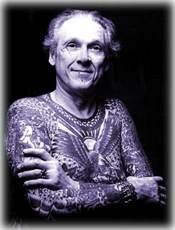The tattoo, although a form of body art accepted by many, has long been seen by mainstream society as a sign of rebellion. In the past it has often been seen as a way to stand out from the crowd, a way to separate yourself from the norm. However, in the recent years, tattoos have become wildly popular. Many athletes and celebrities are known to have tattoos on their bodies. But the question remains: have tattoos been accepted into mainstream society or are they still seen as part of the more rebellious culture?
Tattooing has been a practice in many cultures since the ancient days. Evidence suggests that some of the earliest known uses of tattoos dates as far back as 12,0000 BC. Ancient civilisations, such as those in Greece, Rome, Egypt, Persia, and Arabia, all used tattoos as a way to symbolize skill or status for many of the more accomplished people in their societies.
In other tribal cultures, tattoos were akin to body paint, bestowing either authority or mystical powers on the bearer. The rise of Christianity saw a decline in tattooing as this practice was often seen as “heathen” or “pagan”. Although tattooing was sometimes still done for rites of passage, the overall practice of tattooing was looked down upon with the spread of the church into different parts of the world.
Since the United States has been a predominantly Christian nation, tattooing has long been seen in a negative light. The prominence of tattoos among criminals, gang members, and juvenile delinquents further darkened society’s outlook on tattoos. Following WWII, the art of tattooing was seen in such a negative light that many places, such as New York, banned tattooing outright.
However, this began to change starting in the 1960s with a man named Lyle Tuttle. This charismatic man made excellent use of the media to help tattoos be seen in a more favorable light. Through the media, he tattooed many female (and male) celebrities and brought this art form back into the limelight.

(Lyle Tuttle)
Newspapers, television studios, and magazines went to Lyle to get information about this ancient, and to some, long lost art form. With the attention of the media, Lyle’s work began to capture the imagination of the public and people began to understand that tattoos did not have to be associated with gangs and violence.
People started to get tattoos to symbolize who they are or to remind themselves of something they overcame or accomplished. This rise in the popularity of tattoos has continued on into the present day and tattooists have garnered more respect than they ever have. Popular culture has adopted tattooing into the mainstream as many movie stars and athletes have multiple tattoos on their body. Shows such as Miami Ink have further helped popularize tattooing among the masses and have shown people how tattooing can be used as a form of self expression.
With recent studies showing that almost 20% of all Americans having at least one tattoo on their body, it can be said that tattoos have been accepted into mainstream culture. Although some types of tattooing, such as certain markings on the head, as still negatively associated with gangs, tattooing as an art in general is no longer frowned upon by society.



this is an awesome article. it has helped alot. im referncing this in my research paper. thanks